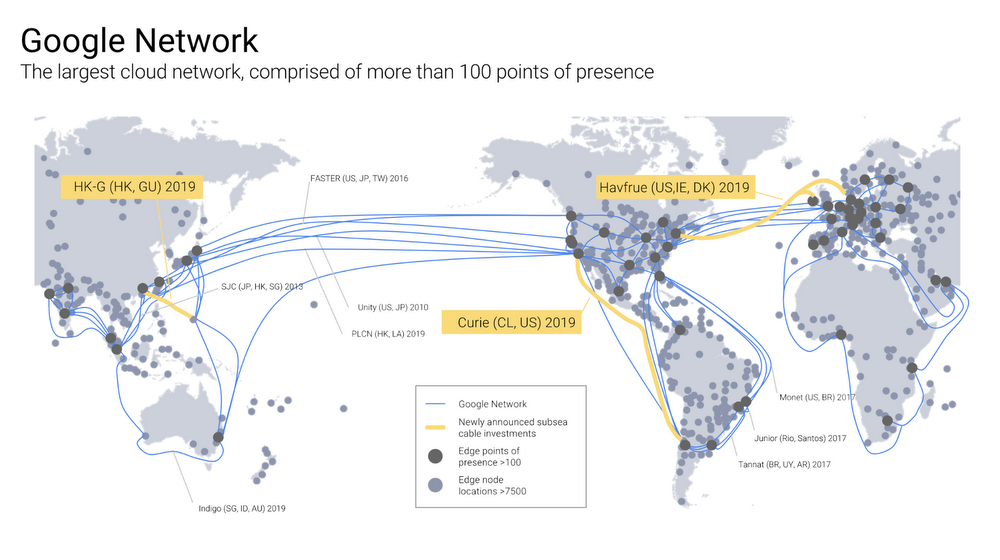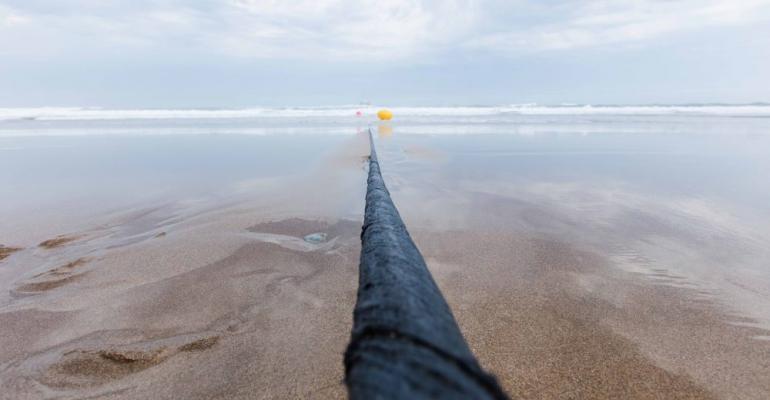Google, which was first among the cloud giants to start investing in submarine cables, is ramping up substantially this type of cloud infrastructure investment.
The company this week announced plans to invest in three new submarine cables that are due to come online in 2019. The cables will dramatically increase the amount of bandwidth on the globe-spanning network that interconnects its cloud data centers and improve performance for users of its cloud services.
In another first among operators of the biggest cloud platforms, the company will fund the construction of one of these cables entirely on its own. The Curie cable (named after the famous chemist and physicist Marie Curie) will be Google’s own private submarine cable interconnecting Chile and Los Angeles.
The company is investing in the other two cables as part of consortia of organizations that are building them.
The Havfrue cable consortium consist of Google, Facebook, Aqua Comms, and Bulk Infrastructure. It will link the US to Denmark and Ireland.
Google is funding construction of the Hong Kong-Guam Cable system (HK-G) together with RTI Connectivity and NEC.
The three new systems bring the amount of submarine cables Google has invested in so far to 11. The company started in 2008 by investing in the construction of Unity, a cable that links the US and Japan.

Cloud companies investing into cable systems directly, as opposed to leasing capacity from the telco and government consortia that own them, is a fairly recent development. Intercontinental connectivity has been a major investment focus for Facebook, Microsoft, and Amazon as well. These companies now consume so much bandwidth that it makes more financial sense to get involved in these projects, which cost hundreds of millions of dollars.
Find a list of recent submarine cable investments by hyper-scale data center operators here
Holding an ownership stake in a cable also gives them control over the choice of telecommunications technology used to light up the cables. As Ben Treynor Sloss, a Google VP of engineering, explained about the Curie cable in a blog post:
Since we control the design and construction process, we can fully define the cable’s technical specifications, streamline deployment and deliver service to users and customers faster. Also, once the cable is deployed, we can make routing decisions that optimize for latency and availability.
As it invests in bandwidth, Google is also expanding the data center capacity that supports its cloud services around the world. The company is planning to launch new cloud availability regions in Netherlands and Montreal in the first quarter, and in Los Angeles, Finland, and Hong Kong later this year, Treynor Sloss said.





